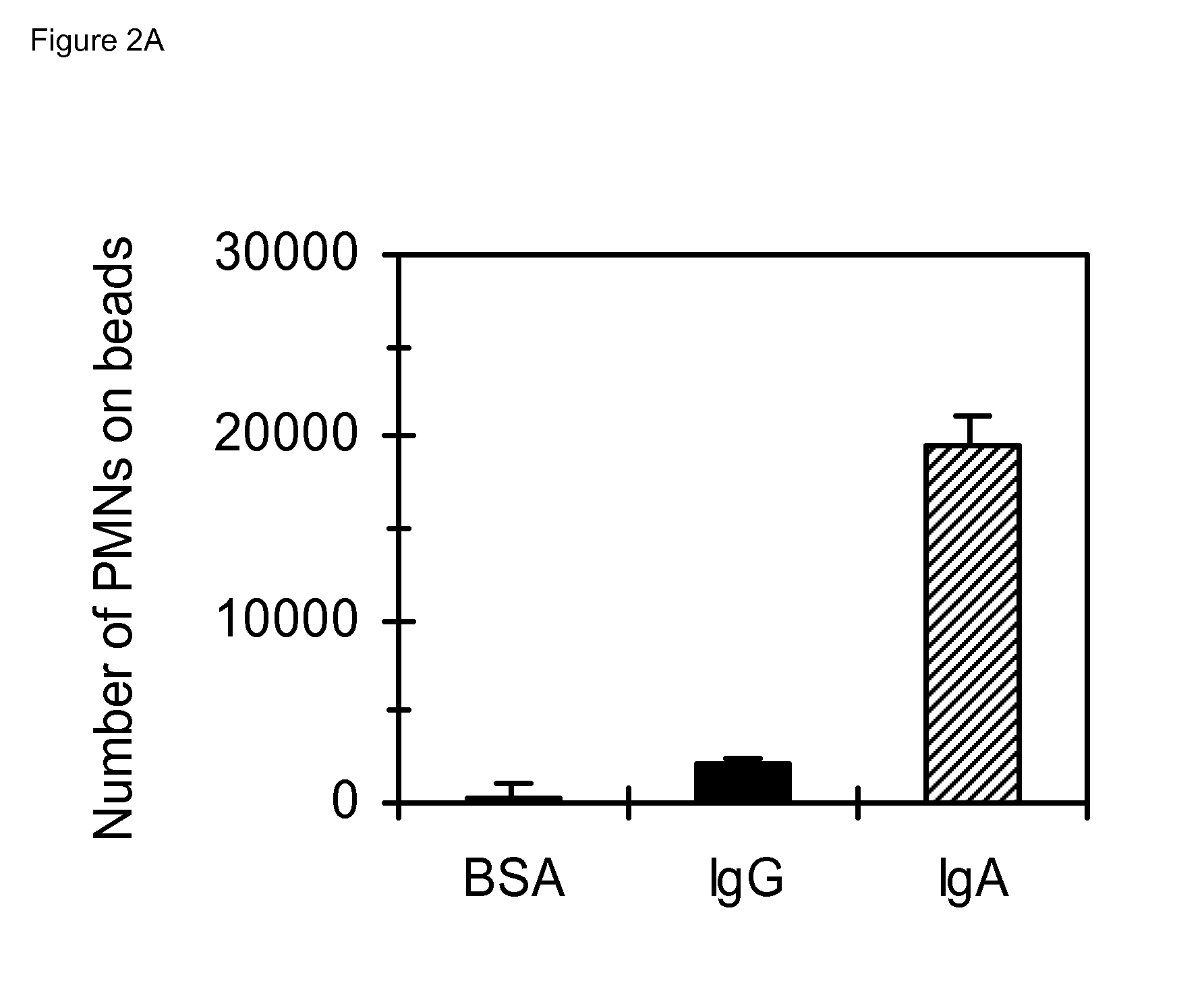Method for the treatment or prophylaxis of chronic inflammatory diseases
a technology for chronic inflammatory diseases and prophylaxis, applied in the field of chronic inflammatory diseases, can solve the problems of inadequate and specific treatment, burden, and chronic inflammatory diseases, and achieve the effect of effective treatment and reduction of polymorphonuclear cell migration and/or polymorphonuclear cell infiltration
- Summary
- Abstract
- Description
- Claims
- Application Information
AI Technical Summary
Benefits of technology
Problems solved by technology
Method used
Image
Examples
example 1
Isolation and Labeling of Polymorphonuclear Cells
[0106]Polymorphonuclear cells were isolated from heparinized peripheral blood samples, which were obtained from healthy donors, by standard Lymphoprep (Axis-Shield, Oslo, Norway) density gradient centrifugation. To lyse erythrocytes, the pellet was resuspended in an ammonium chloride buffer (155 mM, 10′, 4° C.). Polymorphonuclear cells were resuspended in RPMI 1640 (Gibco BRL, Paisley, UK) supplemented with 10% heat-inactivated fetal calf serum, glutamine and antibiotics (RPMI / 10%). Studies were approved by the Medical Ethical Committee of VU University Medical Center (The Netherlands), in accordance with the Declaration of Helsinki. All donors gave informed consent.
[0107]Polymorphonuclear cells were fluorescently labeled with PKH67 (PKH67-polymorphonuclear cells), according to the manufacturer's instructions (Sigma-Aldrich, St. Louis, Mo.). For chemotaxis experiments, polymorphonuclear cells were labeled for 30′ at 37° C. with 1 μM c...
example 2
Preparation of Immunoglobulin-Coated Beads
[0108]All experiments were performed with two kinds of immunoglobulin-coated beads. Nitrocellulose beads were made as previously described (Guile et al., J. Immunol. Methods 214, 199 (1998). Briefly, nitrocellulose (Sigma) was dissolved in dimethylsulfoxide (DMSO) (Sigma) and precipitated by adding milli Q water. Beads of appropriate size were selected using sedimentation times at normal gravity. Pre-wetted nitrocellulose beads were incubated with different concentrations bovine serum albumin (BSA) (Roche Diagnostics, Basel, Switzerland), monomeric IgA (referred to as IgA; Cappel, Solon, Ohio and Sigma), SIgA (Cappel), IgG (Sigma and Nordic Immunological Laboratories, Tilburg, The Netherlands) for 3 h at 4° C. Dimeric IgA (specific for PorA of group B meningococci) was produced as previously described (Vidarsson G et al. J Immunol. 2001; 166:6250-6). Gel separation analyses confirmed that serum IgA was mainly monomeric, whereas SIgA and dime...
example 3
Three-Dimensional Polymorphonuclear Cells Migration Assays
[0109]Collagen gels were prepared as described (Otten et al., J. Immunol. 174: 5472-80 (2005)). Immunoglobulin-coated beads (100 μl / ml) were added and 1 ml / well of this mixture was plated in 24 wells plates and allowed to coagulate, after which 1×106 polymorphonuclear cells were added. After 2 h or 4 h at 37° C. collagen gels were fixed and embedded in paraffin as previously described. Slides were stained with Mayers' hematoxyline (Klinipath, Duiven, The Netherlands).
[0110]Real time video recordings of polymorphonuclear cell migration (1×106 / well; 24 wells plate, Greiner Bio One, Kremsmuenster, Austria) were performed with an inverted phase-contrast microscope (Nikon Eclipse TE300, Tokio, Japan) housed in a humidified, 5% CO2 gassed, temperature-controlled (37° C.) chamber. Randomly selected fields were recorded for 20′ min. Pictures were taken every 15″ with an Olympus ColorView II camera. For tracking experiments an interva...
PUM
| Property | Measurement | Unit |
|---|---|---|
| temperature | aaaaa | aaaaa |
| inner diameter | aaaaa | aaaaa |
| inner diameter | aaaaa | aaaaa |
Abstract
Description
Claims
Application Information
 Login to view more
Login to view more - R&D Engineer
- R&D Manager
- IP Professional
- Industry Leading Data Capabilities
- Powerful AI technology
- Patent DNA Extraction
Browse by: Latest US Patents, China's latest patents, Technical Efficacy Thesaurus, Application Domain, Technology Topic.
© 2024 PatSnap. All rights reserved.Legal|Privacy policy|Modern Slavery Act Transparency Statement|Sitemap



